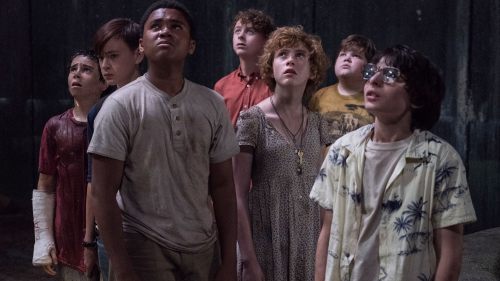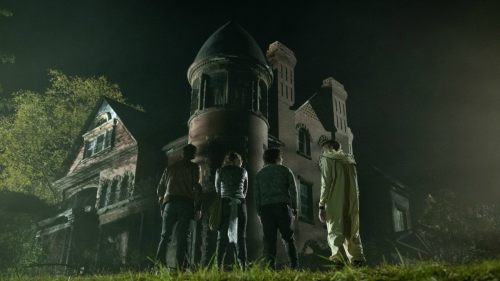SCARY STORIES: A Look Back At Alvin Schwartz’s Career And Love Of Folklore
Scary Stories to Tell in the Dark is almost here and we have a super cool magazine about it. You can get that here. For tickets to the film, go here!
“Telling scary stories is something people have done for thousands of years, for most of us like being scared in that way. Since there isn’t any danger, we think it is fun.” Author Alvin Schwartz introduces his children’s book Scary Stories to Tell in the Dark with this simple explanation as to why humans have always been fascinated with the macabre tales of witches, zombies, and ghosts. There’s a sense of excitement and comfort in telling spooky stories that allow people to experience fear within a safe setting despite how terrifying the subject matter may be. Schwartz knew this to be both entertaining and healthy for the curious, developing minds of children. Despite backlash from overprotective parents, Schwartz’s books on folklore have made a lasting impact on children for the past three decades and continue to grow in popularity.
Born in Brooklyn, Schwartz always possessed an academic flair and love of folklore. After serving in the navy, he obtained a master’s degree in journalism from Northwestern University. He served as a reporter for the Binghamton Press from 1951 to 1955 and later in 1963, Schwartz quit his day job to become a full-time freelance writer. While he did spend some time writing about social issues such as the Labor Movement and the decay of inner cities, Schwartz’s passion lay in folklore and the tall tales heard around the world. One of the first books he published was A Parent’s Guide for Children’s Play and Recreation, a how-to guide on child development. Another book targeted at older audiences entitled When I Grew Up Long Ago contained glimpses of life in the United States during the late 19th century and early 20th century. Schwartz also dabbled in works revolving around wordplay as he believed rhymes were a good way for people to express their feelings without getting into trouble. Books like Tomfoolery features wordplay collected from American folklore and Cross Your Fingers, Spit in Your Hat discusses superstitions, charms, and magic cures. Throughout the span of Schwartz’s career, he wrote over fifty books within thirty years. However he is most known (and loved) for his Scary Stories to Tell in the Dark series which continues to fly off the shelves and has been adapted into a film with director André Øvredal and producer Guillermo del Toro behind the helm.
The first installment of the Scary Stories series was published in 1981 and introduced readers to the creepy yet whimsical minds of Alvin Schwartz and illustrator Stephen Gammell. After the success of the first book, More Scary Stories to Tell in the Dark was published in 1984 followed by Scary Stories 3: More Tales to Chill Your Bones in 1991. Over seven million copies have been sold worldwide. Each book contains short folklore tales along with disturbing pen and ink imagery courtesy of Gammell. Schwartz possessed a singular ability to intrigue children and discuss topics often viewed as taboo to conservative adults. All of the scary stories Schwartz wrote about had roots in real folklore across the world and he spent an extensive amount of time researching each one. A scholar himself, he meticulously cited all of his findings and references in the back of the books so kids can learn more about where these stories originated from and the folklore of other cultures. It’s a simple method to further incite a love for learning while also speaking to Schwartz’s passion for folklore and educating children as well. In his commentary on “Clinkity-Clink”, he sites the history of storytelling amongst slaves in the Old South. For “Oh, Susannah!”, Schwartz discloses that the tale acts as a cautionary legend common among university campuses meant to warn young individuals as they learn to be on their own. Even the story “Sam’s New Pet” has an underlying commentary on immigration that can be relevant in today’s world. In an interview with Language Arts magazine, Schwartz elaborated on his writing process by saying, “Basically, what I do with every book, is learn everything I can about the genre. This will involve a lot of reading and scholarly books and journals and sometimes discussions and scholarly folklorists … In the process of accumulating everything on a subject, I begin setting aside things that I particularly like. What's interesting is that eventually patterns emerge.”
Schwartz was criticized by overprotective parents in the ‘90s claiming his work to be Satanic and unfit for young readers. There were efforts to remove his books from the library but the notion was overruled. In the Scary Stories documentary, Schwartz’s wife and colleague, Barbara Schwartz, giggled as she told that story because “Alvin thought it was wonderful” that there was so much controversy around the books. In the prologue of More Scary Stories, Schwartz wrote “scary stories of this kind often have a serious purpose”. This still rings true as they relate to deeper social and psychological themes that are especially important for kids as they mature. For example, stories like “Harold” possess an anti-bullying narrative while “The Cat’s Paw”, “The Black Dog”, and “Wonderful Sausage” revolve around the issue of mistrust. These are concepts perfectly suitable for growing children learning to navigate the world on their own. Additionally, the series provides a death positive slant by allowing kids to explore their curiosities about the afterlife and process of dying. Unlike most adults, Schwartz provided a blunt yet sensitive approach to death. Instead of avoiding the topic altogether, he wrote tales, songs, and notes that were honest and could appeal to a young mind. In his notes about “Rings on Her Fingers”, he explains what exactly happens when a person is embalmed in a straight-forward scientific manner, and in “The Hearse Song” he playfully details the decaying process of a body while specifically saying the reader will also die one day.
Alvin Schwartz’s ability to marry humor and horror, challenge expectations, embrace taboo subject matter, and elicit acceptance towards foreign cultures is an artistic delight. He translated these deeper subjects in a manner that allows children to safely explore their deviant curiosities while keeping an open-mind about subjects that may normally frighten them. While the content of the stories is important, Schwartz stressed the way in which they’re told too. This is why he also included songs and action cues in his books. Unfortunately, Alvin Schwartz passed away before he could witness the success of his work. At age 65, he lost his battle to lymphoma. According to his son, only fifteen people showed up to his father’s graveside ceremony in 1992. However, his legacy continues to live on decades later, terrorizing and delighting those who grew up with Scary Stories as well as a whole new generation of readers and moviegoers. Thanks to Alvin Schwartz, the tradition of telling scary stories will continue to come back from the grave time and time again.



